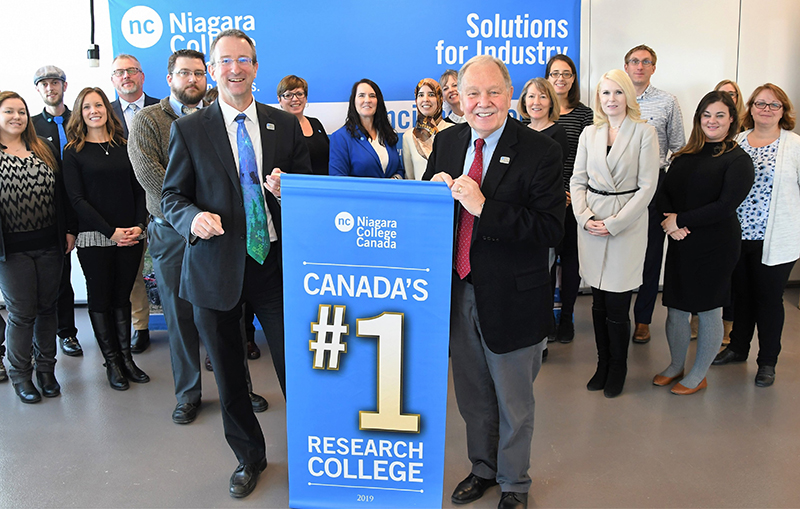Niagara College has been named Canada’s top college for research, but that’s not what pleases Marc Nantel most.
It’s the steady climb to the No. 1 ranking among the top 50 nationwide — and the likelihood Niagara can stay at or near
the top in the next few years — that makes him happy.
“We’ve never contracted, we’ve always managed to grow since I started here and with the people before me here also,” said
Nantel, the college’s vice-president of research, innovation and strategic initiatives.
“In the 20 years (since Niagara got involved in applied research), we’ve always grown.”
The rankings by Research Infosource Inc. based on each college’s funding, are released each year. Recently Niagara has
finished seventh, seventh, then eighth last year before making it to the top this year.
In results announced Tuesday, Niagara also had the third-most interactions with industry and small- and medium-sized businesses
among Canadian colleges.
“We’ve become a hub here in Niagara for small- and medium-sized enterprises that want to grow their businesses, hire more staff
and create new products,” said college president Dan Patterson.
“That relationship between employers and the college is absolutely magical … colleges are at their finest when they link learning
and the application of knowledge to the world of work.”
For 2018, Niagara reported $11.2 million in sponsored research income, from projects that involved funding from the federal and
provincial governments and private business.
Next closest was Cegep de Trois-Rivieres in Quebec, with $10.5 million in funding.
With research funding, colleges provide such services as producing and testing prototypes, evaluating new technologies, and improving
or finding new processes and products.
To get government assistance, private companies must invest their own money as well.
“Companies need research and development expertise that the college has developed and refined,” said Patterson, calling the projects
“a great segue into our students being hired.”
Most of the research and development at Niagara focuses on three areas: manufacturing, food and beverage, and the agri-food
industry that includes commercial cannabis research.
Niagara is part of a research network that also includes Sheridan, Mohawk, Conestoga and Lambton colleges and McMaster University.
Nantel said “a big envelope of funding” for work in manufacturing, as part of a three-year project, boosted the school to No. 1 this year.
“We deliver good results at the end of our projects, so it’s easier to get more funding,” he said.
Nantel said in addition to doing the research and managing their projects, college staff and students are involved in seeking funding
from private and public sources.
Chasing that funding can be a competitive business between post-secondary schools.
“That’s really good for everybody’s careers, because they all learn how to do it,” he said.
Individual schools’ rankings can jump or fall sharply year to year if they start or finish a large project or get money one year
to purchase equipment.
Stability is important for programs and to keep the school’s research and development efforts growing, Nantel said.
“We always try to have a good portfolio,” he said.
“Sometimes manufacturing gets a little more money, sometimes (agriculture) gets a little more money … I’m happy if we’re in the top
10. I’m happier in the top five.
“The No. 1 position goes up and down, but my goal is to keep steady as she goes.”
